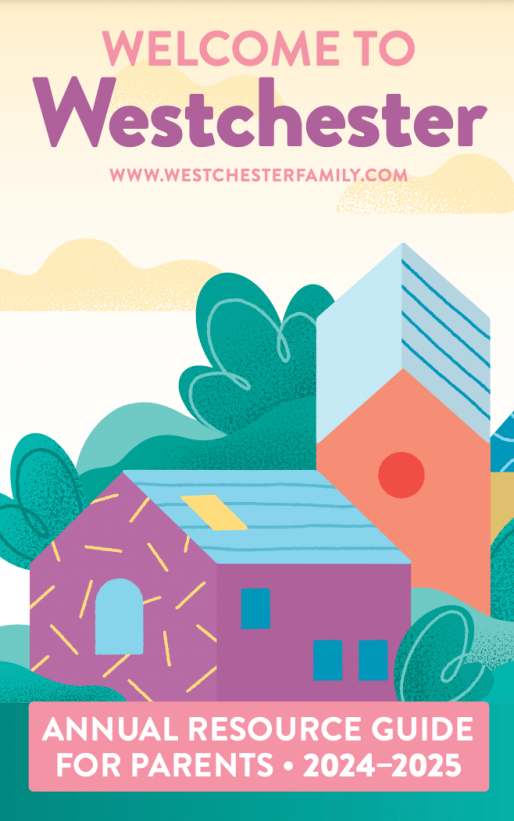Families with Kids on the Autism Spectrum
Back to school season can bring up a range of emotions. Families with kids on the autism spectrum may have to navigate this time of year a little differently. This may include making a plan, preparing your child for challenges, and considering what’s next beyond high school. To learn more, we spoke with Lindsay Naeder, Vice President, Services and Supports Community Impact Autism Speaks.
They recently launched a resource called Autism by the Numbers (ABN) where you can find state-by-state breakdowns of key autism data as well as education stats. Other resources for families include a School Community Tool Kit to promote understanding and acceptance at school and a child’s safety plan to help them navigate new experiences. Read on for some insightful tips about how to prepare for the new year ahead if your child is on the autism spectrum.
Check out these Back to School Expert Tips on Keeping Kids Healthy this School Year

Westchester Family: What are some back to school tips for parents who have kids with autism of different ages?
Lindsay Naeder: For parents of students on the autism spectrum (at any age), it is important that they help their kids know what to expect. Ideally, this is discussed in advance. This can help ease any stress around transitioning to a new classroom with a new teacher.
For kindergarten aged students with autism this may mean introducing them to their school. For example, you can tour the school building. Additionally, you can visit the classroom for a meet-and-greet with teachers and staff. This is a great way to help an autistic child become familiar with their new school. For older students with autism, it’s important to reintroduce them to the school day routine. Give them plenty of time to get used to the idea as it can be difficult after a long break.
Parents should resume bedtime and morning routines a week or more in advance. This is a good way to acclimate back into the school year schedule. Spend time with your child going over new additions together. This includes reviewing school day schedules or practicing combinations for lockers. Visual support is helpful in these situations. Some examples include charts, calendars, or personalized teaching stories. They can support communication and help students better understand what to expect in new situations. Meeting with new teachers and staff is always helpful for autistic students’ adjustment. It also provides a way for parents to share more about their child’s needs.
Make sure your child’s IEP or Individualized Education Program, 504 plan, and other learning supportive services are updated. This ensures that your child is receiving appropriate education services tailored to their unique strengths and needs. An IEP or 504 plan will evolve over the course of a child’s school career. It is important to meet with their team.
This allows you to assess where they may need more or less support at the start and throughout the school year. As students get older, you can involve them in IEP and 504 planning. Parents can work on their child’s team to find opportunities for planning and goal setting. This is great for building self-advocacy skills. Autism Speaks offers a guide on IEP best practices and advocacy tools to help you navigate this process.
Westchester Family: What is the best way to speak to your school’s administration about your child’s autism?
Lindsay Naeder: Whether it is your first IEP meeting or 10th, it is important to remember that parents are members of the school community too. In fact, most parents report they initiate the connections between their child and many members of the school community each year. It is important to be becoming an informed advocate and familiar with your child’s rights. This can help keep communication open with your child’s teachers, support staff and school administration. Parents can prepare by reviewing our School Community Tool Kit. Here, you’ll find information on how to support a student with autism as well as how to promote an understanding with administrators and peers.
An IEP meeting includes parents, the student, teachers, support staff and administration. They are all dedicated to walking through a child’s needs to develop IEP goals.
The objective is to provide the student with appropriate special education. This helps them access the curriculum in the least restrictive environment. Be sure to include any specific needs in the IEP, along with a safety plan. In addition, include considerations for staff in all settings. This may include bus drivers, school safety officers, lunchroom and recess school staff.
Westchester Family: What kind of support should parents be seeking before the school year starts?
Lindsay Naeder: Parents should not expect to become an autism expert over night. However, they are an expert of their child. A good starting point in advocating for the right services and support. Start by writing out a list of your child’s strengths and challenges. From there you can develop an outline. This includes goals, programs, and related services that will help you communicate effectively with your school district. Examples of areas to consider for support include classroom setting and peers, class content, social/communication, sensory sensitivities, executive functioning, safety, parent training, and transition services. Our IEP guide includes detailed information on the types of support and services to consider.
Finding a community for your child and your family matters. It creates a sense of purpose, provides a means to build social connections, and offers a support network. Autism Speaks offers a guide to a variety of support services for all groups and ages, from skill improvement workshops and social classes for kids and teens to support groups from families. In addition, our walk program gives kids and families the opportunity to connect with those who may have experiences similar experiences, triumphs, and challenges with autism. It is a great way to encourage kids to be sociable and for families to come together.
Westchester Family: What are some ways teens can transition from school to the adult world?
Lindsay Naeder: Unfortunately, many teens and young adults leave the school system and face difficulties as they transition into the world of adult services. It is important to prepare for this transition early and be aware of their legal rights, available supports, and the employment and housing options available to them as they charter a path forward. It’s never too early to start planning. However, most states legally require transition planning to begin around the age of 14. Many parents are shocked to find out planning can begin this early. However, working on life skills, job readiness, internships, and paid employment experiences before graduation lead to the best adult life outcomes for autistic students.
Autism Speaks has developed the Transition Roadmap to Postsecondary Education to help prepare people with autism and their families for life after high school, Another useful way to prepare teens for the adult world is developing and practicing strong self-advocacy skills. Developing these skills is a great example of a goal that can be built into the IEP and transition planning goals.
As so many young adults remain un or underemployed after graduating, Autism Speaks prioritizes delivering guidance and advice on the employment process, from beginning a job search, creating a resume and interviewing, to knowing your rights in the workplace, with our Pathways to Employment events—our next event is on October 26!The Autism Speaks Autism Response Team also offers personalized advice and guidance on finding inclusive employment opportunities in your local area.















